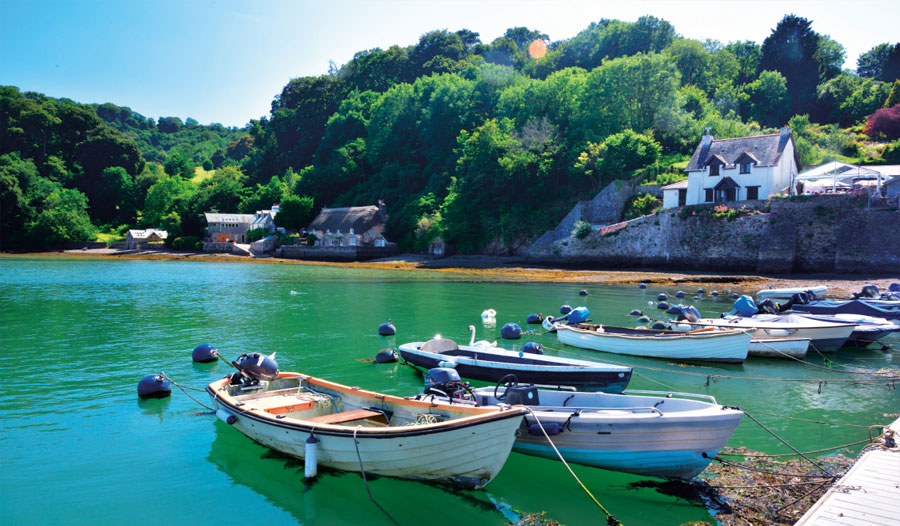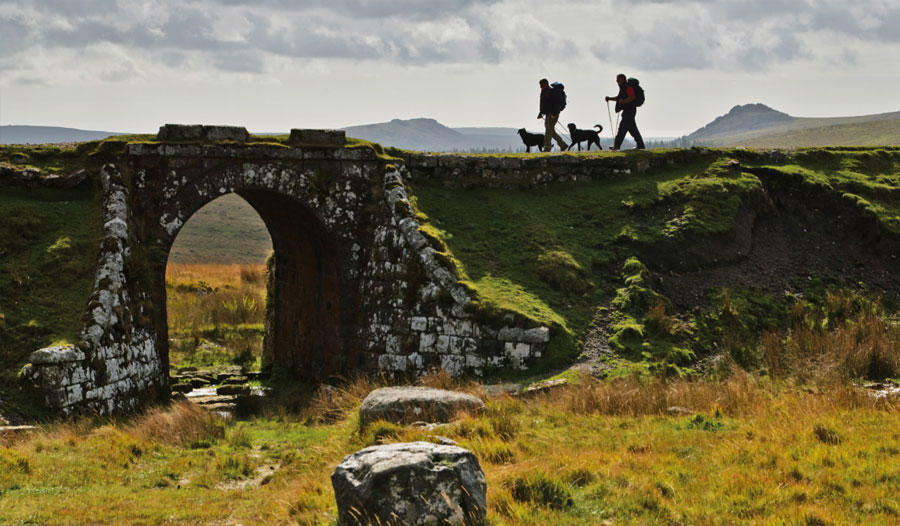Whether you’re visiting the county for a long weekend or two to three weeks, you’re never far from a scenic walk, glorious birdlife or a unique piece of British history, says Jo Knowsley

Inland there’s the gentler option of inlets, estuaries and bays. Everywhere the views are sensational, and you’re never far from a pub or inn to take a break or find a berth for the night.
It is a deliciously romantic county, full of myths and legends, and one of the most beautiful and best-loved in Britain.
The Dart Valley Trail is deservedly one of the most popular walks in Devon. It runs for 16 miles between Totnes and Dartmouth in the south of the county, though it’s possible to walk it in smaller sections. Along the way, don’t miss Agatha Christie’s wonderfully evocative holiday home, Greenway, a glorious 18th-century house that is now managed by the National Trust.
On Dartmoor - the backdrop of Arthur Conan Doyle’s Sherlock Holmes story The Hound of the Baskervilles – you’ll find the Dewerstone - a large granite outcrop in a wood. Its name derives from Dewer, a Celtic term for the Devil.
According to folklore, he would haunt the woods at night and punish lost travellers. The rocks are less daunting these days and are the highlight of a delightful circular three-mile walk starting at nearby Cadover Bridge.
Wistman’s Wood is another wonderful, easy walk on a marked path in the middle of the Dartmoor National Park. Legend has it that the trees were planted by druids.
Then there’s the four-mile walk from Gutter Tor to Higher Hartor Tor, said to have inspired the setting for Michael Morpurgo’s War Horse. When Steven Spielberg filmed the movie he said he had never seen such an abundance of natural beauty.
Dartmoor itself is a treasure trove. It has been a national park since 1951, covers 368 square miles of wild upland moor, forests and bogs.
One of my favourite places to stay on Dartmoor is the Two Bridges Hotel (twobridges.co.uk), which is tucked away in the heart of the park. It is dogfriendly (they get their own doggy bags on arrival), and offers great dining and overnight stays at a reasonable price.

In south-east Devon, near the border with Dorset, Branscombe to Beer is a much-favoured walk, offering fantastic views of the Unesco-listed Jurassic Coast. From Branscombe you meander past historic forges, old bakeries and mills, and stroll alongside some of the best beaches in Britain. Devon is an absolute haven for birds, with many sanctuaries, including the Dawlish Warren Nature Reserve, the Axe Estuary and the Exminster Marshes.
At the Langstone Cliff Hotel (langstone-hotel.co.uk) near Dawlish, a dedicated team has pulled together the ultimate checklist for keen twitchers. Indeed, the hotel itself is a perfect location for bird watchers. Just seven miles from the hotel, and five miles from Exeter city centre, the Exminster and Powderham Marshes are wonderful places to see birds all year round. The land lies alongside the estuary of the Exe river, separated from it by the Exeter Ship Canal.
The marshes are a vital feeding and resting area for birds that come to Britain during their migration and spend the winter here – look out for geese, ducks and waders. It’s also one of the few places that lapwings and redshanks still nest.
Dawlish Warren Nature Reserve is a ten-minute walk from the hotel. Expect to see wading birds, storm-blown seabirds, wintering gulls and migrant land birds.
Over at Prawle Point, South Hams, keep an eye out for gannets, stonechats and jackdaws – possibly even a kingfisher or two.
At Bowling Green Marsh, near Topsham, you’ll find an RSPB reserve. It’s superb for bird watching at high tide, when the mudflats of the Exe Estuary are covered by water. There’s a good hide here with an adjacent wildlife garden. Along with the vast numbers of waders and ducks you may even spot red kites, ibis and ospreys.
Whatever you choose to do, and whichever one of the glorious inns and lavish hotels you choose to stay in, there’s no doubt you’ll come away relaxed and refreshed.
◆ Useful links for organised walks and tours include wanderlust.co.uk, theculturetrip.com and macsadventure.com
Pictures: Adobe Stock








